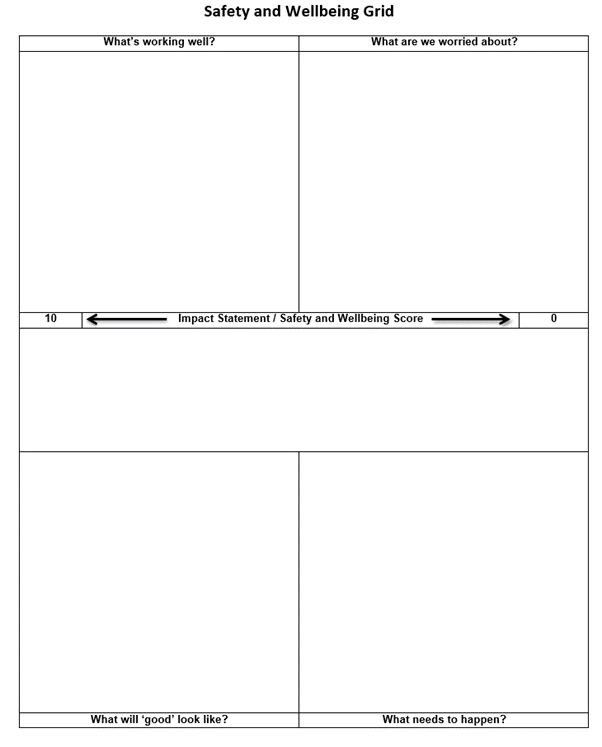Thresholds for Children's Services
This section outlines the thresholds that staff in Derbyshire Children's Services use to determine the level of risk / need and response needed.
We have agreed on a joint Threshold document with Derby City to provide effective multi-agency support to children and their families. This document, updated in December 2024, clarifies that thresholds should not be used as a checklist to access support from children’s social care. Instead, it emphasises the importance of agencies working collaboratively and engaging in quality conversations to understand each child's life and determine the most helpful and appropriate response to any identified risks or needs.
As a partnership we have agreed to help families and work with them to help prevent their children’s needs escalating. All agencies have agreed to actively seek to work with the child and family at the most appropriate level of need.
The Stronger Families Safer Children Practice Model has been developed by Derbyshire County Council to provide an overarching framework for all Early Help to Safeguarding and Specialist Services.
The practice model was informed by and developed from the learning from serious case reviews and practice learning. It is a strengths-based model which encourages practitioners to remain professionally curious. It supports practitioners to make better informed decisions around what intervention(s) are helpful and to provides practitioners with guiding principles and tools to enable them to work in an efficient, effective, purposeful, collaborative and respectful manner with children, young people and families; with clear, measurable outcomes.
The practice model supports the Joint Derby City and Derbyshire Threshold Document by encouraging professional curiously and promoting quality constructive conversations, with partner agencies and the family, at the point of referral and throughout our involvement with a child and their family. It encourages key questions to be asked when completing and assessment and developing & reviewing plans for children to ensure our involvement and intervention continues to be focused on the right things and remains proportionate and appropriate to the key risks and needs.
The Safety and Well-being Grid is one of the tools, developed as part of the Stronger Families Safer Children Practice Model. This tool aims to help practitioners to focus both on strengths (protective factors) and risks, and to understand the child’s lived experience. It also aims to enable them to plan what needs to happen next to help families achieve the outcomes identified for the child(ren).

The threshold document outlines the following four levels of support:
- Universal - Open Access provision: All unborn babies, children and young people will receive Universal Services, however, some children, either because of their needs or circumstances will require extra support from these services to be healthy and safe and to achieve their potential. Universal and individual agencies will be able to take swift action within their services to address these low level needs;
- Emerging Needs: This category includes children with additional needs who may be at risk or showing early signs of abuse and/or neglect. Their needs may be unclear, unidentified, or unmet. These children might be receiving care primarily focused on adults. At this stage, it is essential to initiate a multi-agency early help assessment;
- Intensive: These children require specialist services to achieve or maintain an adequate level of health or development, or to prevent significant impairment of their health and development and/or who are disabled. They may need long-term intervention from specialist services. In some instances, these children's needs may be secondary to the adults' needs. Unborn babies, children, and young people with more complex needs, including vulnerable children and those with a complex disability and/or special education needs, may require more intensive support and several threshold indicators might be present to indicate need at level 3.
Before requesting services at level 3 Intensive, Practitioners are expected to have worked or offered to work with the family within the Level 2 framework – Emerging Needs, prior to making a referral to Local Authority Children’s Services, unless there is a clear rationale for escalating the unborn baby/child/young person’s needs before early help work has been completed. This work evidence would be provided in a new or updated Early Help Assessment and Team Around the Family (TAF) action plan, which should outline the family's concerns and the involved agencies and form the basis of the referral.
When the threshold is met for intensive support, it will be offered through Local Authority Children’s Services Teams or following a single assessment by Children’s Social Care (Section 17, Child in Need). The lead practitioner for intensive support will usually be from one of these teams; - Specialist: Unborn babies, children, young people and families whose needs are complex and enduring will need more specialist support. At this level more than one service is normally involved, with all practitioners involved on a statutory basis either under S17 or S47 of the Children Act 1989 with a qualified Social Worker as the professional lead.
Last Updated: June 12, 2025
v57